Wildlife tracking technologies have already massively advanced our understanding of the natural world, from uncovering previously mysterious migration patterns and key movement corridors to demonstrating the impacts of anthropogenic pressures and climate change. Recent advances in the development of technologies for collecting and transmitting biologging data have unlocked the potential for fine-scale data collection at a near-global scale, which when integrated with remotely sensed environmental data offers an unprecedented biological lens into ecosystem health and environmental change (Jetz et al. 2022).
New technologies on the horizon include small satellites like CubeSats, which are being investigated by NASA, the ICARUS Initiative's satellite system, and a variety of other ventures aiming to improve the coverage, accuracy, and capacity of wildlife tracking data collection. Combined with the increased availability of high-resolution environmental data and analytical developments in movement modeling, these advancements are empowering movement ecologists to ask previously unanswerable or unimaginable questions. It’s clear that this discipline sits at the precipice of major breakthroughs that could revolutionize our understanding of animal movement and the natural world.
- @carlybatist
- | she/her
Science Outreach Lead-Rainforest Connection (RFCx) & ArbimonEcoacoustics, biodiversity monitoring, primates, lemurs


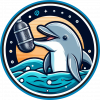
- 69 Resources
- 281 Discussions
- 18 Groups
Smart Parks
Founder of Smart Parks - www.smartparks.org / Founder of OpenCollar - https://opencollar.io


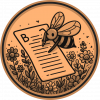
- 0 Resources
- 13 Discussions
- 5 Groups
Movement Ecologist studying the where, why, and how animals move throughout our world. Current work is investigating the movement and energetics of large neotropical bats in a changing environment with ephemeral resources.



- 0 Resources
- 23 Discussions
- 22 Groups
- @amykukulya
- | she/her
Amy Kukulya is an ocean tech innovator and conservationist from the US. She has captured thrilling footage of megafauna using novel biologger and oceanrobotCams—SharkCam, TurtleCam featured across the globe on mainstream media outlets.
- 0 Resources
- 0 Discussions
- 7 Groups
- @Rob_Appleby
- | He/him
Wild Spy
Whilst I love everything about WILDLABS and the conservation tech community I am mostly here for the badges!!

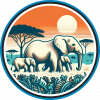

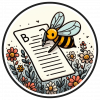

- 1 Resources
- 261 Discussions
- 11 Groups
- @HollyCormack
- | she/her
Biodiversity Knowledge Management Intern at the Biodiversity Consultancy Ltd



- 6 Resources
- 5 Discussions
- 6 Groups
- @aleontiou
- | she/her

- 0 Resources
- 10 Discussions
- 7 Groups
Western Sydney University
Zoologist
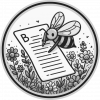

- 0 Resources
- 32 Discussions
- 3 Groups
Royal Society for the Protection of Birds (RSPB)
A technologist and a conservationist



- 0 Resources
- 23 Discussions
- 5 Groups
- @jcturn3
- | He/Him
Colorado State University
I am a graduate student at Colorado State University working to develop novel acoustic technology for remotely monitoring wildlife.
- 0 Resources
- 6 Discussions
- 3 Groups
- @roxirisa
- | roxi
Biologist I consider myself a data scientist with a passion for nature and with an extensive experience in species distribution modeling, handling large data sets from different sources such as gbif, eBird, xeno-canto, Worldclim, Terraclimate, ocean color e NASA among others. But
- 0 Resources
- 0 Discussions
- 9 Groups
- @foxy50213
- | Mr.
- 0 Resources
- 0 Discussions
- 8 Groups
Careers
The Smithsonian National Zoo & Conservation Biology Institute is seeking a Program Manager to help coordinate multiple organizations in an effort to integrate movement data & camera trap data with global...
22 April 2024
The Smithsonian National Zoo & Conservation Biology Institute is seeking a Postdoctoral Research Fellow to help us integrate movement data & camera trap data with global conservation policy.
22 April 2024
Article
You’re invited to the WILDLABS Variety Hour, a monthly event that connects you to conservation tech's most exciting projects, research, and ideas. We can't wait to bring you a whole new season of speakers and...
22 March 2024
Hussey Labs seeks a senior post-doctoral researcher/senior research associate for movement ecology of Greenland halibut in the context of fisheries management across Baffin Bay-Davis Strait, Eastern Canadian Arctic.
13 March 2024
Catch up on the conservation tech discussions and events that happened during World Wildlife Day 2024!
7 March 2024
more affordable pricing for our software for the visualization and annotation of GPS and acceleration data
4 March 2024
Careers
Seeking a doctoral student to join the Move.inFormation research group in an exciting new project investigating the use of social information for optimal movement in the Andean condor.
12 February 2024
Research topic: Pathogens and predators represent the ultimate and ubiquitous threats to fitness. One of the defense counter-strategies is behavioural avoidance of the cues of infection risk (disgust) and predation risk...
10 February 2024
The primary focus of the research is to explore how red deer movements, space use, habitat selection and foraging behaviour change during the wolf recolonization process.
10 February 2024
The Wildlife Restoration Foundation is hiring a Conservation Technology Intern
8 February 2024
In the last article of my series examining how people find biologging tech for their projects, I spoke with Annkathrin Sharp, a Programme Officer at Fauna & Flora about how her experience choosing DIY Biologgers to...
14 December 2023
In the penultimate article in my series examining how people find biologging tech for their projects, I spoke with Matthew Stanton about developing custom biologging technology for studying koala behaviour.
7 December 2023
June 2024
event
November 2023
event
| Description | Activity | Replies | Groups | Updated |
|---|---|---|---|---|
| I am working on that too haha. So in my design you load the glue gun with two part Loctite, it has two separate metal rings. Glue and hardener in each ring. Then each ring has a... |
+23
|
Biologging | 2 days 6 hours ago | |
| Hello @CourtneyShuert If I am not mistaken, Wildlife Computers was developing or has developed a remote release package for such an application as has a much smaller company... |
|
Biologging, Marine Conservation | 5 days 2 hours ago | |
| I'll find you some. Just organising all of our stock of these. |
+9
|
Biologging | 5 days 8 hours ago | |
| Hi everyone, @craig joined last month's Variety Hour to chat about Tagranger, which you can read more about here. A TagRanger®... |
|
Biologging, Connectivity, Sensors | 1 week ago | |
| 'Most importantly, we have to make it play a MIDI version of the DoctorWho theme song when you arm the device. That has to be the #1 feature if you ask me!' Seconded! |
+9
|
Acoustics, Biologging, Emerging Tech, Open Source Solutions, Sensors | 1 week 1 day ago | |
| Might very well be so! I highly encourage you to take up the challenge! |
+23
|
Biologging | 1 week 4 days ago | |
| This is so cool @Mauricio_Akmentins - congrats and look forward to seeing your project evolve! |
|
Acoustics, Biologging, Climate Change, Conservation Tech Training and Education, Data management and processing tools, Emerging Tech, Open Source Solutions, Protected Area Management Tools, Sensors, Software and Mobile Apps | 2 weeks 3 days ago | |
| You mention you're working with an engineer, here are a couple of pointers:with an SDR (the "digital USB receivers" you mention) you can scan some bandwidth to detect radio pulses... |
|
Biologging, Build Your Own Data Logger Community | 2 weeks 6 days ago | |
| Hello everyone, I'm interested in gathering insights on how the behavior of different species impacts the development and efficacy of... |
|
Biologging, Acoustics, Camera Traps, eDNA & Genomics, Emerging Tech, Marine Conservation | 1 month ago | |
| Hello Peter, Have you find a solution ? I will be happy to discuss with you about your project and field challenges ? Best,Virginie |
+26
|
Biologging | 1 month ago | |
| Thank you Carly, I will definitely take a look. |
|
Acoustics, Biologging, Climate Change, Conservation Tech Training and Education, Data management and processing tools, Remote Sensing & GIS, Software and Mobile Apps | 1 month ago | |
| Hi all, I am searching for marine species projects that monitor orientation/IMU and/or acceleration data... |
|
Biologging, Marine Conservation | 1 month 1 week ago |
Operation Pangolin launches to save world's most trafficked wild mammal
16 February 2023 7:51pm
pseudoranges
31 January 2023 9:10pm
1 February 2023 6:26pm
Although it is not explicitly stated anywhere, I believe SnapperGPS uses similar "pseudorange" methods.
2 February 2023 3:24am
Thank you very much for finding these materials. I also tried to find similar techniques using pseudorange positioning a few months ago, but unfortunately I did not find so many papers and such creative works at that time. Your materials seemed to open it up for me. most sincere thanks!
16 February 2023 9:35am
There is now a really nice paper on the SnapperGPS:
Catch up with The Variety Hour: February 2023
14 February 2023 6:26pm
AniMove 2022 Course Lectures Available to Stream
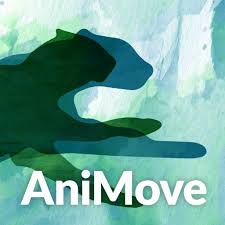 AniMove
AniMove
10 February 2023 1:27pm
AniMove Summer School 2023
10 February 2023 1:19pm
New tutorial on Firetail 10 - annotation of acceleration data
8 February 2023 12:18pm
Hi! I created a new tutorial video on how to annotate high density acceleration data using Firetail 10 (www.firetail.de). In particular, I cover
* how to automatically segment your data
* how to edit and modify annotations
* how to transfer models across individuals
* how to overlay external and video annotations
If you like to follow the tutorial, grab
* your movebank account
* this study: https://www.movebank.org/cms/webapp?gwt_fragment=page=studies,path=stud…
* the free edition of Firetail from firetail.de
Crowdfunding for GPS loggers for a threatened shorebird
3 February 2023 3:54pm
Telemetry and tracking Snakes
30 January 2023 2:44pm
31 January 2023 6:29pm
Hi Huascar!
I have no experience with tracking snakes.
If I was you, I would start by having a look at a goggle scholar search like this:
Another place to ask for advice from experienced users would be to find some snake tracking researchers on
Good luck!
2 February 2023 1:47pm
Hi Huascar, how are you? there's limitations on snakes since their body form and behaviour, if you leave a VHF or GPS tag as an external fixation it will get tangled with roths and branches and it will fall, besides you have to suture and it can cause infections.
So far you only got implanted VHF transmitters, that's the most common, lonlasting and safe fixation method.
There's an alternative of using Tegaderm as a external fixation method but with ecdysis will eventually remove it.
any doubts please write me [email protected]
Advanced Field School in Computational Ecology
25 January 2023 2:54pm
Repository for 3D models of tracking devices
14 September 2017 2:29pm
3 October 2017 6:33pm
3D model of custome-made GeoTrak GT-65GS-GPS with slanted front face (adapted from http://www.geotrakinc.com/products/solarGPS/PTT-65g-solarGPS.html).
Known flaws: Size and shape of attachment loops are not correct: the actual material is too thin to allow for a strong 3D printing so I decided to make the loops thicker; the actual loop hole is also slightly wider. Base of antenna is shorter than actual one. Actual device has smoother angles and slightly convex top (where the solar panels are).
The 3D print will need to be sanded to smoothen the edges and to get the soft angles of the original design. I also designed the tag with a hole where the back solar panels should be: this is to add weight (metals nuts and bolts) to reach a final mass of 65g.
Attached files:
gt-65gs-gps_slanted_3d.skp_.pdf: SketchUp 2016 file. Change file name back to .skp
gt-65gs-gps_slanted_for_3d_print.stl_.pdf: Printing file. Change file name back to .stl
Yvan


20 September 2018 6:01pm
Hi Yvan,
Steph directed me to this awesome resource. These units look so well made! Are you potting in the solar panels? Also, if you are interested, we've been working on a timed drop-off for avian tracking devices similar to this, which I am happy to share details about.
Anyway, in the spirit of your efforts, we've uploaded some collar housing designs and associated .stl files to our Website here: https://www.wildspy.com.au/resources.php
Shall add more as we design more.
Great initiative Yvan!
Cheers,
Rob
19 January 2023 10:38pm
I Rob, I just saw your message today (19 Jan 2023)! It's a bit late to reply but I wanted to make sure the tag manufacturer got the credit on the quality of their work. I'm not the manufacturer (just a user): these are made by Keith LeSage at Geotrak Inc, North Carolina, USA. We've beein working with them for about 10 years now and all their tags are as good looking as these.
Firetail Fellowships
19 January 2023 12:11pm
I'm a software engineer/data scientist at Schäuffelhut Berger. We're developing Firetail a software for GPS and acceleration visualization and behavioral annotation.
We have just launched our Firetail Fellowship Program which may be a great way to get access to a full Firetail license for your student project. Let me know if you have questions or comments on this!
Apply Now: AI for Conservation Office Hours
18 January 2023 5:15pm
How do I fit GPS satellite tags to remotely monitor giraffe movements?
18 January 2023 9:05am
Interview for Technologies in Conservation
24 November 2022 10:07am
16 January 2023 2:42pm
I'd be happy to chat with you if you wanted! My expertise is within passive acoustic monitoring particularly. The Conservation Tech Directory might be useful for you in identifying relevant actors within the space.
16 January 2023 5:16pm
Happy to contribute [email protected]
17 January 2023 5:12pm
My original background is in ecology and conservation, and am now in the elected leadership of the Gathering for Open Science Hardware which convenes researchers developing open source tech for science. I am not working on a specific piece of technology right now, but am happy to contribute some higher-level views for your interview if that helps.
Wildlife Telemetry Podcasts
9 January 2023 11:49am
9 January 2023 12:22pm
There is also this one:
featuring @ThomasGray_Argos
Very cool, Thomas!
16 January 2023 5:04pm
Hey, I know that guy : )
How tracking technology is transforming our understanding of animal behaviour
 Louise Gentle
Louise Gentle
16 January 2023 3:14pm
Case Study on Monitoring Aquatic Species with Gliders and Biologging Gear
13 January 2023 3:51am
Here's a fascinating new case study on Ocean Tracking Network's work with underwater gliders to track tagged marine species like crabs. If you're interested in biologging, marine tech, or fisheries' tech usage, take a few minutes to read this!
Conservation Technology Intern (Vietnam)
11 January 2023 5:00pm
NomaTrack and the LoRa-DTN protocol
27 February 2021 11:58pm
26 March 2021 8:26pm
LoRA is registered in most places. With Starlink offering more and more service it would be possible in the future to transmit remote images through satellite once it is available in Madagascar. Power consumption of Starlink is big though.
4 January 2023 2:07pm
Hi Carly!
Since LoRa and LoRaWAN are meant for low bandwidth data it is not really feasible to use for transmitting remote audio and image data. It could be very valuable to have metadata like battery levels and trap "levelness" sent back to get an idea of the power and physical state of the traps. I am dreaming of something like this for our remote camera traps used for monitoring arctic fox dens in Greenland. They are not rarely turned over by muskox and polar bear and we are consequently loosing important data.
9 January 2023 3:36pm
The system is showcased here:
GPS tacking tag for turtle doves - any recommendations?
11 August 2021 11:00pm
24 September 2021 3:12pm
Hi Chris,
I can say I've had some good experience with the Lotek Pinpoint tags that Rob mentioned.
You could also get in touch with ICARUS program at Max Planck (https://www.icarus.mpg.de/en). They've developed a new tracking system, with their own first reciever on the ISS. I think there are some limitations on the availability of their tags now as they're still ramping up their program.
Kyler
13 October 2021 6:13pm
Hi all! Just wanted to add in that @gracieermi and I maintain a conservation tech directory that includes all the tracking/telemetry companies we've come across so far - conservationtech.directory.
Currently listed doing a search of the directory -
Cellular Tracking Technologies - https://celltracktech.com/
Advanced Telemetry Systems (ATS) - https://atstrack.com/index.html
Ecotone Telemetry - http://www.ecotone-telemetry.com/index.php/en/oferta/obroze-telemetryczne
GPS Collars - https://www.gps-collars.com/
Lotek - https://www.lotek.com/
Microwave Telemetry - https://www.microwavetelemetry.com/
Milsar - https://milsar.com/
Technosmart Europe - https://www.technosmart.eu/
Telemetry Solutions - https://www.telemetrysolutions.com/
Telenax - https://telenax.com/
Telonics - https://www.telonics.com/index.php
Tigrinus - https://www.tigrinus.com.br/
Titley Scientific - https://www.titley-scientific.com/us/products/wildlife-tracking
Wildlife Computers - https://wildlifecomputers.com/
Xerius Tracking - http://www.xeriustracking.fr/
North Star - http://www.northstarst.com/
Migrate Tech - http://www.migratetech.co.uk/
e-obs GmbH - https://e-obs.de/
Africa Wildlife Tracking - https://awt.co.za/
Holohil - https://www.holohil.com/
Wildlife Materials - https://wildlifematerials.com/
Vectronic Aerospace/Vectronics - https://www.vectronic-aerospace.com/
Kiwi Track - https://kiwitrack.weebly.com/
6 January 2023 8:32pm
The solution with an ICARUS antenna on the ISS is on hold. It is planned that the GRACE-I will be the new satellite system to support the ICARUS:
GRACE-I is planned to be launched in 2027.
This mentions possible intermittent solutions:
I am a bit puzzled there is no mentioning of GRACE-I on ICARUS' own website:
Designing non-standard tracking collars
6 January 2017 8:40pm
24 February 2017 11:36pm
Hi,
i've build collars for quite a few "non-standard" collared species. I tend to modify cheap consumer GPS devices to do so. It's a few years old now, but attached is a link to a video I made on modifying GPS devices for wildlife.
https://youtu.be/UaSvS0grVjw
feel free to email me with any specific questions you have.
5 January 2023 7:59am
Have a look at this for an example of unconventional tracker designs:
GPS collars for goats
15 February 2022 3:45pm
18 August 2022 7:00pm
Can you expand on what you mean by "They are the only commercial, direct to satellite, animal monitoring ear tag"?
19 August 2022 2:00am
We were the world first commercial direct to satellite ear tag. There are collar base solutions that work direct to satellite.
3 January 2023 7:40pm
I have no experience with LoraWAN tracking myself but just wanted share a few relevant links for a LoraWAN wildlife use case and a few suppliers of LoraWAN trackers:
An alternative to LoraWAN could be UHF based systems like:
10 min fix intervals is quite high. You may need solar powered devices to keep up this high frequency.
Good luck!
Margo Luminous Beta Launch: New Tracking Collar Manufacturer
20 February 2020 5:30pm
3 January 2023 3:14am
Hi @Lars_Holst_Hansen I can provide an update. The initial beta units have completed testing and production of commercial units has begun. Low volumes so far but we are quickly ramping up.
The official launch should be in next month or so.
If you would like you can email [email protected]
To be notified early as soon as we have units available.
Brett
3 January 2023 5:05pm
Thanks Brett! I am not looking to buy anything any time soon but I am always curious to follow any new progress and developments in the market of biologgers.
Regarding the accelerometry I am curious to know which frequencies are supported. Have you considered magnetometry, too? This could obviously be useful in dead reckoning but also for inferring behavioural states (as shown in this paper).
3 January 2023 5:36pm
No problem. I believe Jared was wanting to share more about our experience developing a collar on Wildlabs when there is time. I'm more on the mechanical end of things. Right now we are focused on reliability and longevity. Thanks for the paper I'll check it out!
Workshop Invite: Building Partnerships between Conservation Tech and the UK Space Sector
22 September 2022 3:50pm
5 December 2022 3:10pm
Hi Steph,
If it's not too late, I'm very interested in this workshop.
Best,
V
6 December 2022 5:52pm
Hey Vance! We hosted the workshop a few weeks ago, but we're doing follow up calls and future meetings. I'll loop you into the next call!
Steph
12 December 2022 12:03am
Hi Steph. Would be interested also.
Post Doctoral Fellow - Computer Vision/Arctic Avian Ecology
7 December 2022 4:21am
Underwater Camera Trap Video Confirms 1,100-Mile (1800-km) Swim of Tagged Great White Shark
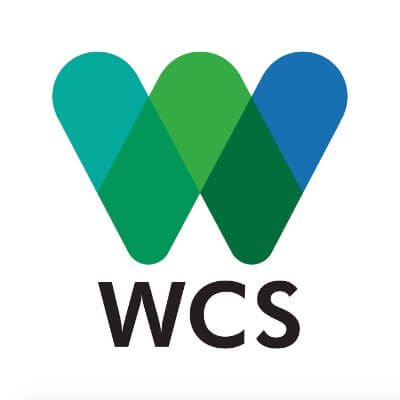 WCS
WCS
25 October 2022 10:20am
Shark Lab Data Analyst
24 October 2022 7:12pm
Water leakage in aquatic tags at deeper depths
12 October 2022 12:37pm
20 October 2022 11:41am
Thanks a lot Alasdair, this is great. We will take this into consideration for our next testing phase.
Best
Hari
21 October 2022 4:12pm
I'll add - avoid fast curing resins/epoxies for, at least, two reasons:
1. The exothermic reaction between the two compounds can cause sensor issues (ie: heat).
2. Air bubbles will form (and cure) more easily in fast curing compounds.
23 October 2022 2:51pm
Thanks Thomas!! We do use slow curing resins with no heat generation
Conservation Technology Intern (Vietnam)
 Meredith S. Palmer
Meredith S. Palmer
19 October 2022 9:22am
Rainforest SigFox available for use
26 August 2022 6:09pm
26 September 2022 10:20pm
Hi Roland,
This is really amazing, great to hear about your set-up! I'm just wondering what the overall cost was to set up this system? Just thinking in terms of setting up something similar in other parks and what they should expect with regard to price. Would also be great to hear about the overall effort, e.g., hours/team members required. It would be great to have this act as a blueprint for other organizations/research stations wishing to deploy a similar system within their respective national parks/areas/etc.!
10 October 2022 8:33am
Hi Rolland,
Interested too, but why did you choose SigFox (a private network) rather than LoRa (open network)?
Sigfox currently has some financial troubles that, don't know what it will become in the long term.
18 October 2022 11:55am
Hi Everyone,
We chose sigfox becuase it seems to have better range and is plug-play, whereas LoRa requires more custom programming and updating. Getting a gateway cost us $2000 for a year's lease + deposit. We covered solar power. There are also some 'minigateways' you can purchase but I don't know how they compare in range (plan to test). So far we are happy with the performance, in that it has worked consistency with no outages (once we stabilized the power supply). I think the annual costs are about $10 per tag. We are working on a paper that will describe this in more detail. So far just using for tracking tags but also looking at a trap sensor.
cheers
Roland




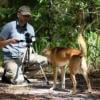



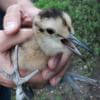








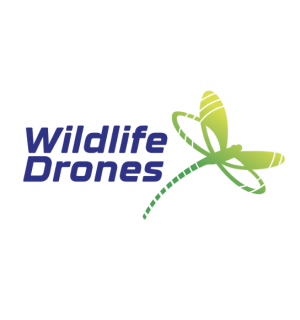


























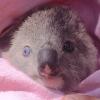
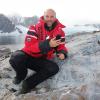



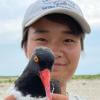

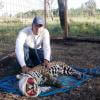







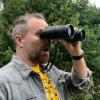
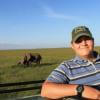





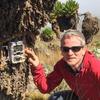
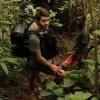
17 February 2023 1:50am